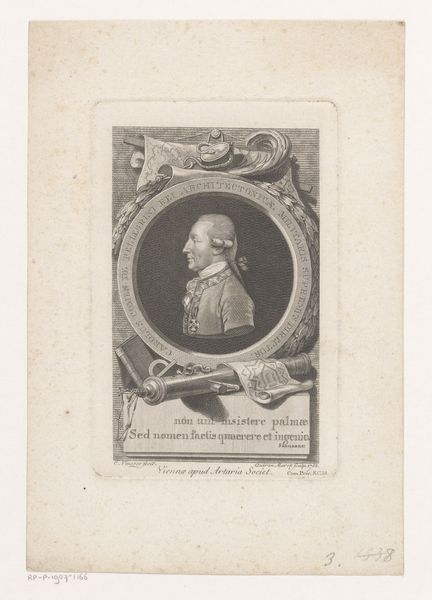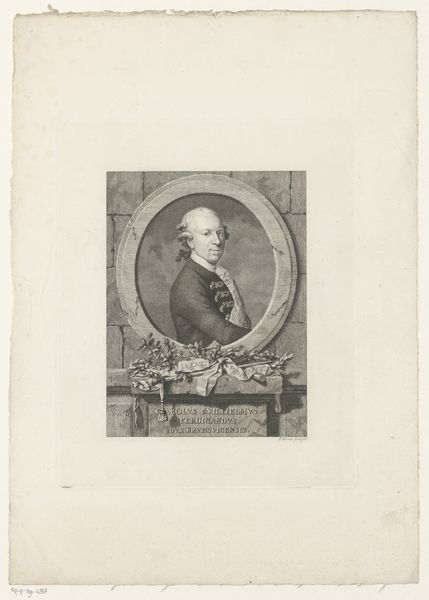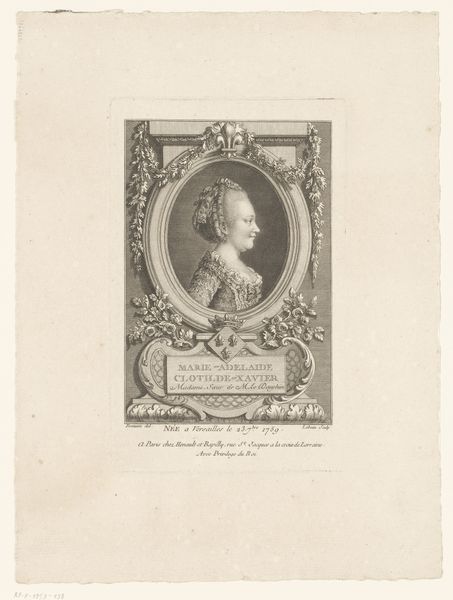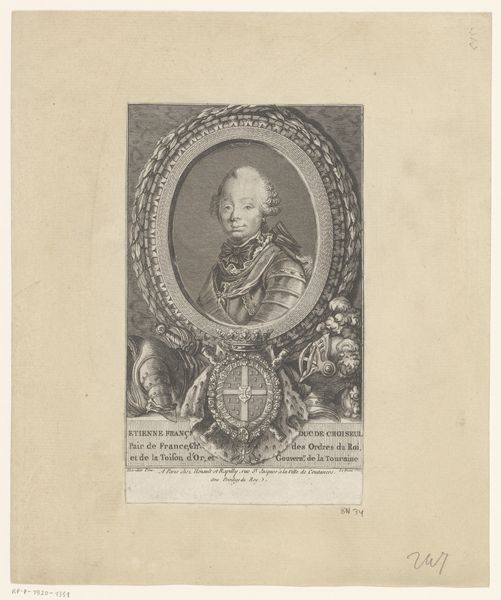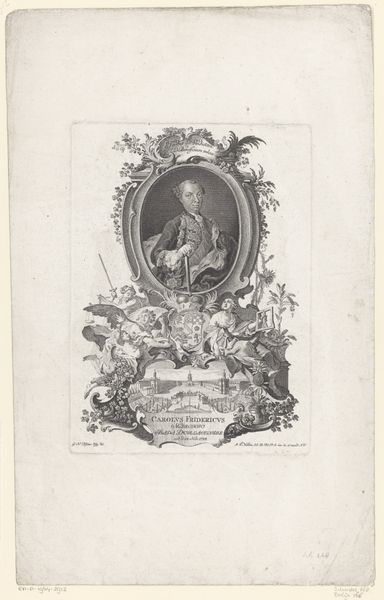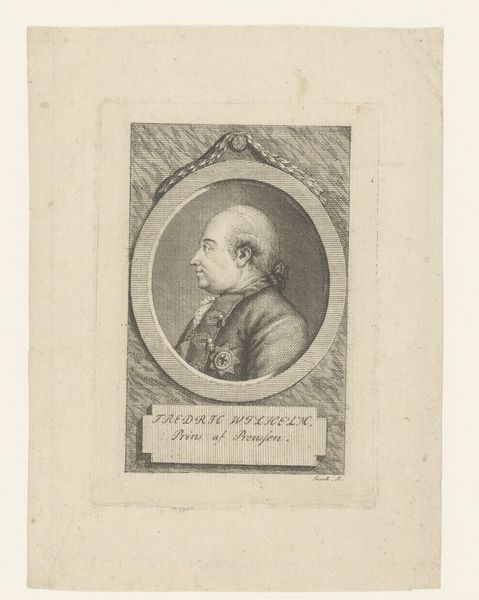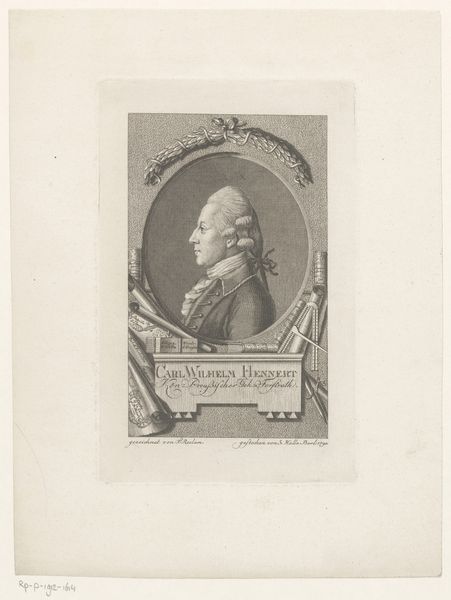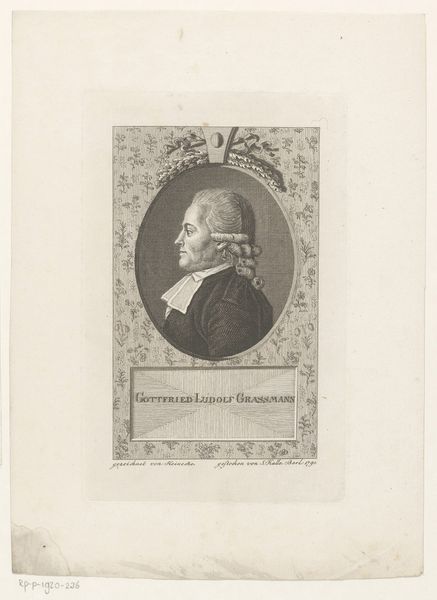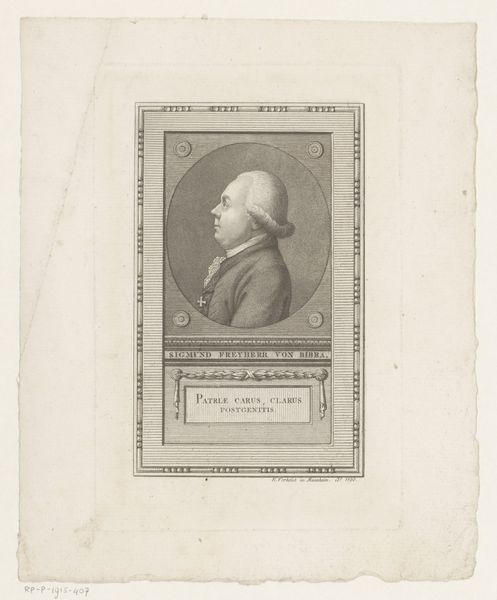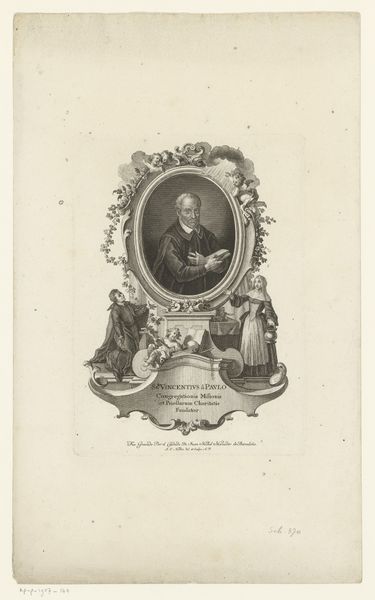
Dimensions: height 285 mm, width 208 mm
Copyright: Rijks Museum: Open Domain
Editor: So, here we have Ambrosius Gabler's "Portrait of Johann Dreykorn," an engraving from 1784. It feels so formal, and very much of its time. What social narratives are unfolding in this portrait, would you say? Curator: What strikes me first is the carefully constructed image of power and intellect. Engravings like these served as crucial tools in shaping public perception and bolstering social status. The inclusion of books in the background positions Dreykorn as a man of learning, subtly reinforcing his authority. How do you think the institutional context played a role in its making? Editor: So you're saying the printing press, as an institution, actually shaped the visual language here? The sitter *needed* to project those traits for this kind of artwork to work? Curator: Precisely. The Baroque aesthetic, even in portraiture, became a performance. Think about who controlled access to the printing press, who commissioned these portraits. The sitter is quite literally framed – contained by ivy leaves, but simultaneously legitimized and elevated. Editor: That's interesting. The portrait now feels like an assertion, a carefully crafted public statement as much as a likeness. Did most people have access to artworks such as this, or did social class factor heavily into visibility? Curator: It wasn't mass media as we know it. This would be disseminated amongst a specific intellectual and social circle, reinforcing existing power dynamics and constructing a historical record skewed towards the elite. We have to be careful about what stories these images tell, and more importantly, what voices remain unheard. What did Dreykorn contribute, actually? That is, what's *his* story, as distinct from this image? Editor: Absolutely. Thinking about it as a piece of political messaging really opens it up. It moves it away from being a 'likeness' into being another way elites communicated *with* elites. Curator: And that understanding re-shapes how we see art history, focusing our attention on power and purpose behind every work of art.
Comments
No comments
Be the first to comment and join the conversation on the ultimate creative platform.
